The Application of Mobile Learning Technologies at Malaysian Universities Through Mind Mapping Apps for Augmenting Writing Performance
Volume 5, Issue 3, Page No 510-517, 2020
Author’s Name: Rafidah Abd Karim1,a), Airil Haimi Mohd Adnan2, Mohd Haniff Mohd Tahir2, Mohd Hafiz Mat Adam1, Noorzaina Idris3, Izwah Ismail2
View Affiliations
1Universiti Teknologi MARA, Perak Branch, Tapah Campus, Tapah Road, 35400, Malaysia
2Universiti Teknologi MARA, Perak Branch, Seri Iskandar Campus, 32610, Malaysia
3Universiti Teknologi MARA, Puncak Alam Branch, 42300, Malaysia
4Politeknik Ungku Omar, Ipoh, 31400, Malaysia
a)Author to whom correspondence should be addressed. E-mail: feida16@uitm.edu.my
Adv. Sci. Technol. Eng. Syst. J. 5(3), 510-517 (2020); ![]() DOI: 10.25046/aj050363
DOI: 10.25046/aj050363
Keywords: Mind mapping applications, Mobile learning technologies, Mobile-assisted Mind Mapping Technique Model (MMTM), Writing performance
Export Citations
21st century learning focuses on the flow of information, media, and technology. In Malaysia, many university students face problems in English writing. Thus, students should be exposed to the technology training in innovative ways to produce students with a dynamic in this ever-changing world. Recently, the transformation and the evolution of mobile have created a huge impact on mobile users, as it is the current trend. Due to this matter, university students are now experiencing innovative learning development through mobile application and this can certainly improve their learning performance. The purpose of the study is to examine the application of mobile learning technologies through mind mapping applications for augmenting writing performance at Malaysian universities. The study was based on three different research theories -Flower and Hayes Writing Process Model, Radiant Thinking Theory, and Unified Theory of Acceptance and Use of Technology (UTAUT). The results of the study show that the students had positive responses towards English writing skills background, mobile technologies application background and mind mapping applications background. The proposed conceptual framework, Mobile-assisted Mind Mapping Technique Model (MMMTM) supports the need for Malaysian university students to augment their writing performance. It is hoped that this study will benefit the policymakers, tertiary educators and university students in teaching and learning specifically in writing courses.
Received: 09 April 2020, Accepted: 07 June 2020, Published Online: 25 June 2020
1. Introduction
The Industry 4.0 era offers another impetus for improvements in instruction and learning programs with momentous impacts, currently being a number one in ICT-related specialized training. The noteworthy impact of ICT-related advances on instruction and learning programs has gained the interests of teaching and learning experts. For them, these interesting developments will have a strong influence on the Education 4.0 initiative and learners should be readied to face opportunities and challenges that come with these developments. Though specialization, Education 4.0 needs to create future-oriented students with higher abilities in thinking and reasoning. When the students complete their formal education, they need to be driven and ready to adapt to any kinds of disruptions in an authentic manner. Some of them would co-work with human as well as with machines. Considerably more basic than at any other time is the requirement for improved cooperation and coordinated efforts. To be relevant in a period of rapid disruptions, students and graduates must also develop aptitude that are related to self-directed improvements. that, students also need to master several soft skills. The skills, such as critical thinking, creativity, context problem solving, and cognitive flexibility are needed to thrive in the Industry 4.0. Mobile technologies have also become one of the smarter talents that ride through the wave of this era. Moreover, the thriving of this era has produced the accessible various devices, applications, and apps which assisted the educators for instructional practices.
Thus, effective teaching and learning methods are very important in enhancing student’s achievement in each course. As the technology advances today, various teaching and learning techniques and methods are introduced and applied in the field of education. The mobile convention is gaining more attention and is often applied in instructional methods especially in the higher education institutions. This paper presents the study on the mobile learning technologies through mind mapping applications for augmenting writing performance. Hence, it is critical to determine the relationship between the Mobile-assisted Mind Mapping Technique (MAMMAT) and students’ writing performance. In this study, the MAMMAT is defined as a designed technique with Mobile-Assisted Language Learning (MALL) and mind mapping applications to employ students in learning and increase their motivation and performance in writing. Whilst, writing performance is a variable measured using the writing test and the scores are evaluated by the marking guidelines rubric.
- Purpose
This purpose of the study was to examine the application of mobile learning technologies through mind mapping applications for augmenting writing performance among Malaysian universities. Specifically, the objectives of the study were:
- To investigate university students’ English writing skills background.
- To investigate university students’ mobile learning technologies application background.
- To investigate university students’ mind mapping applications background.
- To propose a new conceptual framework for augmenting writing performance among Malaysian university students.
This paper presents the concept of mobile technologies application with the integration of mind map applications for developing the soft skills specifically in critical thinking, creativity, problem solving in addition to augmenting writing performance among university students.
2. Related Research Work
This section presents an overview of the related works within this study. Writing is a multiple task and process [1]. Brainstorming is a method to generate ideas. For example, students can brainstorm the ideas for thinking about a topic, to understand a topic and to decide the solutions. The brainstorming method offers numerous advantages for teaching and learning writing skills. This method can be used for assisting students to solve problems in learning. As related to the present research, students may use this method for solving problems in their essays. Before the actual writing stage is a pre-stage activity which often use the mind mapping application to brainstorm ideas. This stage refers to an action that urges students to compose as it animates their contemplations for beginning and moves them away from confronting a clear page for creating thoughts and gathering data for composing [2].
Brainstorming and mind mapping activities are common among students to help them in the planning stages of writing [3]. 128 students were investigated using a mixed method approach based on the outcome of students’ writing performance through mind mapping strategy [4]. He found that the students’ performance in writing had improved due to the association of mind mapping and organizational pattern. This strategy was found to help students in developing positive attitudes for essay writing. In addition, another benefit of using mind maps for writing. They found that visual learners had a 40% higher memory rate compared to the verbal learners in writing tasks [5]. Evidently, this strategy provides several benefits for students and teachers in writing lessons.
Mobile and gadgets have the prospective to be featured as a medium of instruction in higher learning institutions. Therefore, various initiatives have been taken to diversify mobile assisted teaching approaches. A study revealed that 85 students that used the CASE tools improved their achievements in the classroom (Performance Expectancy). The tools also affected their behavioural intentions (Social Influence) to employ CASE tools in the place of effort expectancy [6]. This shows that students’ performance can be enhanced by using technological tools in learning. The impact of technological advancement on education is enormous which advances the knowledge and the development of the teaching and learning environment. The effects of the teaching method using mind map sharing with digital archive data showed that this method improved the students’ knowledge [7]. In addition, the utilization of mobile technology with mind mapping applications have improved the undergraduates’ writing assignments [8]. In the case of this study, the paper focuses on the application of mobile technologies through mind mapping applications specifically. In this sense, some theoretical studies on writing and mobile technology were also discussed in the next section.
3. Theoretical Background
3.1. Flower and Hayes’ Writing Process Model
In general, students find writing to be extremely difficult. This process involves several stages for instance, thinking, planning, drafting, and editing ideas [9]. The activities include cognitive and metacognitive dimensions of language learners. Additionally, many educators feel positive towards the process approach and think that students will greatly benefit from this approach [10]. The model by Flower and Hayes is really a reasoning-based procedural model of writing, which designates the complex nature of producing high quality written text. This model is built upon the basic premise of planning, writing, and revising, with a hierarchical progression, and goals developed and modified throughout the process.
Flower and Hayes then proposed another important cognitive model of the creative phase and [11] who reviewed and explained that there are three main features in this model of the process. The elements proposed are task environment, long-term memory, and writing developments.
Consequently, they state that the task environment can be described as writing assignments. Then, the assignments will be assessed, and they will contribute to the writer’s achievement in writing. The second element, the long-term memory, refers to the background information which applies in the writing process such as topic, audience, and several ideas. Finally, the writing processes elements include organizing, decoding, and revising evaluated by a monitor. The monitor will control the process of creating ideas, planning information, and setting objectives.
3.2. Radiant Thinking Theory
Mind maps have been considered as an all-inclusive yet widely spread field of study. Understanding the nature of the mind map concept is significant for this thesis’ aim to contextualize the writing of undergraduates. Developed from Buzan’s theory [12], the mind map is recognized as a learning instrument that can help learners to use their radiant thinking. The concept of mind map covers more brain potential. This delimitation appears to derive from the comprehensiveness defining the usage of mind maps such as the category of radiant thinking, colours, numbers images, exploiting lines and pictures or keywords. Thus, this theory emphasizes how to exploit radiant thinking in using the mind map for learning as in Figure 1.
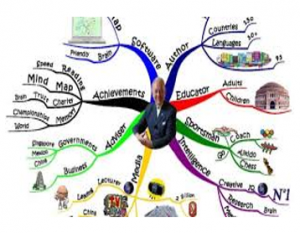
Figure 1: The Mind Map (Buzan & Buzan, 1996)
Radiant Thinking was introduced as the underlying theory and philosophy behind mind mapping [13]. This theory is called Branching Association Machine (BAM), which describes the mind as always radiating from a central image. In addition, every image has a never-ending chain of branching patterns or images away from this central image. Buzan also highlighted some of purposes of mind maps in his study such as, to form an idea on a broader topic, to help learners to plan and decide ideas, and to help learners to collect and organize data. By so doing, learners will develop their efficiency in writing. They will be able to engage in reflective reflection and stimulate their thinking and memory in reflective reflection and stimulate their thinking and memory. Mind map as literally a map of the mind [14].
3.3. Unified Theory of Acceptance and Use of Technology (UTAUT)
Several researchers have addressed users’ applications of new advances. They presented three constructs to the Unified Theory of Acceptance and Use of Technology (UTAUT) [15]. His team of researchers listed the constructs as hedonic drive, price value and habit which are suitable to be used for technology users. This study proposes to add context-specific constructs to this theory. Similarly, another study by [16] who added another construct for this theory which is an Information Technology (IT) as a component to distinguish work, especially for the organizational work setting. This theory has a potential to be explored further in future research. In other words, there are several alternatives for additional constructs to be explored and added to this theory. Other researchers then explored further on this theory in academic settings. The investigations are to determine the different results from this theory when they focus on students in different academic settings. These research efforts suggest that other detailed constructs should be added to the model.
From that point onwards, seven new constructs should be the direct determiners for this model based on the review of the models. Conversely, the researchers found that the other three constructs did not contribute directly to the use of technology. However, they accepted another four constructs, and these were retained in the model.
3.4. Conceptual Framework
For this study, a conceptual model framework called the ‘Mobile-assisted Mind Mapping Technique Model (MMMTM)’ was developed and proposed for augmenting Malaysian university students’ writing performance. This designed and proposed framework was based on three different research theories; (1) the Flower and Hayes Writing Process Model (1981), (2) Unified Theory of Acceptance and Use of Technology (UTAUT) model (2003) and (3) the Radiant Thinking Theory (1996). The conceptual framework of this study investigates the students’ English writing skills background, the mobile technologies application background and mind mapping applications background. Within this context, it shows the learners’ background knowledge and their attitudes influence their writing performance using the mobile technologies application and mind mapping application.
In Figure 2, the framework describes the association of three main variables. Within this context, it shows the MAMMAT as an independent variable, the writing performance as a dependent variable, and the learners’ background knowledge and learners’ attitude as moderator variables.
Within this framework, learners’ attitudes comprise of the students’ attitudes towards the use of mobile-assisted mind mapping technique that can influence their writing performance. Whilst, learners’ background knowledge comprises of the knowledge of writing skills, the knowledge of mobile learning application and the knowledge of mind mapping applications. Venkatesh proposed four core and fundamental paradigms: Performance expectancy, facilitating conditions, effort expectancy together with social effect. These constructs be the direct determinants of behavioural intentions and ultimately behaviour [17].
Besides, learners’ background knowledge which is the knowledge of writing, knowledge of mobile learning and knowledge of mind mapping can also give positive effect to the learners’ writing performance. Research by [18] suggest that long term memory is a part that stores author’s information. The information rotates on the subject, composing process, target group, and general objectives and plans for carrying out the composing job which needed to be done. To augment students’ writing performance, these learners must be given access to application of the proposed framework. Hopefully, this framework will be able to augment their writing performance.
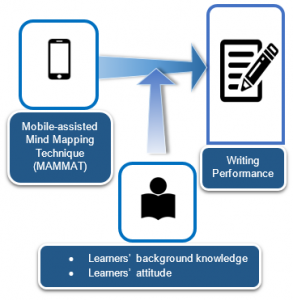
Figure 2: Conceptual Framework for Augmenting Writing Performance
4. Research Methods Adopted
This study utilizes a quantitative method which examine Malaysian university students’ application of mobile learning technologies through mind mapping applications for augmenting writing performance. A questionnaire was designed to investigate the students’ English writing skills background, mobile learning technologies application background and mind mapping applications background. They were asked to answer 10 items of the questionnaire. The questionnaire was divided into three sections. The first section includes four items on English writing skills background to find about the students’ background on English writing skills. The second section contains three items to find about the students’ application of mobile technologies for learning. The final section includes three items to find about the students’ application of mind mapping for learning. The questionnaire items for all sections were developed using Likert scale, multiple choice questions and rating scale. The questionnaire was piloted, and the reliability was at 0.78.
The questionnaire was disseminated to forty-four (N=44) university students in Malaysia. 7 of university students are male and the other are 37 females. The data were collected and analysed for about one semester. Based on the study, the following research question (RQ) was formulated for the purpose of the study. After the data from the questionnaire was gathered, they were analysed by determining the descriptive statistics and percentages for each of the questionnaire’s items. The data was analysed using Statistical Package for the Social Science (SPSS) software version 23. At the end, the results were presented in the form of table and charts.
The following research question (RQ) was formulated for the purpose of the study.
RQ 1: What are the university students’ English writing skills
skills background?
RQ 2: What are the university students’ mobile learning
technologies application background?
RQ 3: What are the university students mind mapping
applications background?
RQ 4: What is the proposed framework for Malaysian university
students to augment their writing performance?
5. Results and Discussion
Tables and charts represent the results of the questionnaire’s items. The frequency and percentage analysis demonstrated about the university students of English writing skills background, mobile learning technologies application background and mind mapping applications background.
5.1. English Writing Skills Background
In the first section, the questionnaire measured the respondents’ English writing skills background. The respondents were asked to answer four items in this section; (1) enjoy writing in English, (2) level of English writing proficiency, (3) writing stage difficulty and (4) reasons from stop writing. The data then were analysed for investigating the university students’ English writing skills background as shown in Table 1. The responses were given based on a four-point scale.
Based on Figure 3, most of the respondents had answered ‘Somewhat agree’ to Item 1. The data gathered from the respondents showed that 24 respondents or 54.5% had a positive attitude in English writing. There were also 12 respondents or 27.3% who had responded that they enjoyed very much writing in English. Meanwhile, only 7 respondents or 15.9% and 1 respondent or 2.3% had answered that they somewhat did not enjoy and that they did not enjoy at all writing in English. This result shows that the students mostly enjoyed English writing because English is an international language which is important for them to acquire the language.
Table 1: English Writing Skills Background
| Item | Frequency | Percentage |
| 1. Do you enjoy writing in English? | ||
| Strongly disagree | 1 | 2.3 |
| Somewhat disagree | 7 | 15.9 |
| Somewhat agree | 24 | 54.5 |
| Strongly agree | 12 | 27.3 |
| 2. How good do you think you are at writing in English? | ||
| Average | 17 | 38.6 |
| Good | 23 | 52.3 |
| Excellent | 4 | 9.1 |
| Not good at all | 0 | 0 |
| 3. Which activity of the writing process do you find it most difficult to carry out? | ||
| Pre-writing (Brainstorming/Getting ideas) | 26 | 59.5 |
| Writing (When writing/Drafting) | 15 | 34.1 |
| Revising (After writing) | 1 | 2.3 |
| Editing (When revising) | 2 | 4.5 |
| 4. What usually stops you when you are writing an essay? | ||
| I have no ideas/ points for my essay | 26 | 59.1 |
| I cannot find the right word/ expression in English | 14 | 31.8 |
| I do not know how to spell the word in English | 0 | 0 |
| I cannot find the right linking words and sentence connectors to connect my points/ideas | 4 | 9.1 |

Figure 3: Enjoy writing in English
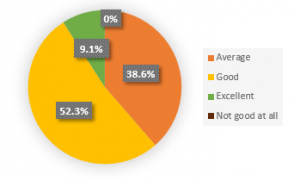
Figure 4: Level of English writing proficiency
In Figure 4, the majority of the respondents answered ‘Good’ to Item 2. The data gathered showed that 23 respondents or 52.3% thought that they were good at writing in English. Whilst, 17 respondents or 38.6% felt that they were average in English writing. None of students said that they are excellent in writing English. 4 respondents (9.1%) answered that they were ‘Excellent’ in writing English. None of students said they are not good at all in writing English, showing that there was a need for instructors to find other effective strategies in augmenting English writing abilities.
As shown in Figure 5, most of the respondents had answered ‘Pre-writing’ for Item 3. Pre-writing is the stage for brainstorming or getting ideas before we start writing. The data showed that 26 respondents or 59.5% said that ‘Pre-writing’ was the most difficult activity of the writing process to carry out. While for actual writing stage, a writer needs to write or draft their essay. The chart shows that about 15 respondents or 34.1% had responded that actual ‘Writing’ was the most difficult activity for the writing process. The next stage of the writing process is called revising stage or after writing stage. For this stage, the writer needs to revise their essay after the writing stage. For this stage, only 1 respondent or 2.3% had answered ‘Revising’ as the most challenging activity to carry out. Another activity that the writer will experience after their writing stage is the editing stage or when revising stage. 2 respondents or 4.5% had responded that the ‘Editing’ process was the most difficult activity of the writing process. This finding highlighted that most of the respondents (59.5%) said that ‘Pre-writing’ was the most challenging activity within within the writing process.
Thus, it aligns with the study which is to discover the feasibility of the framework which incorporate the use of mobile technologies and mind map applications as a brainstorming strategy in pre-writing for augmenting university students’ writing skills.
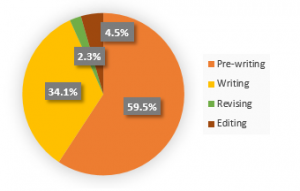
Figure 5: Writing stage difficulty
Figure 6 below shows that 26 of the respondents (59.1%) answered that ‘I have no ideas/ points for my essay’. There were also 14 respondents or 31.8% who had responded that they cannot find the right word or correct expression in English that usually stops them when they are writing an essay. Only 4 respondents or 9.1 % said that ‘I cannot find the right linking words and sentence connectors to connect my points/ideas’. None of students said they do not know how to spell the right word. From this finding, it can be inferred that most respondents need more creative teaching techniques to help them to brainstorm ideas to start their essays. Therefore, this proposed framework is in the right path to provide students with a new technique that might be able to assist them in getting ideas to start their English language essays.

Figure 6: Reasons for stop writing
5.2. Mobile Learning Technologies Application Background
In this section, the information collected was about the respondents’ mobile learning technologies application background as shown in Table 2. The respondents were asked to answer three items from this section; (1) use mobile devices for learning, (2) categories of mobile learning device, (3) hours per day usage. The data then were analysed for investigating the university students’ mobile technologies application background.
Table 2: Mobile Learning Technologies Application Background
| Item | Frequency | Percentage |
| 5. Do you use your mobile devices for learning? | ||
| Yes | 43 | 97.7 |
| No | 1 | 2.3 |
| 6. What mobile device do you usually use for learning? | ||
| Mobile phone | 9 | 20.5 |
| Smart phone | 35 | 79.5 |
| Tablet | 0 | 0 |
| Personal Digital Assistant (PDA) | 0 | 0 |
| Other | 0 | 0 |
| 7. On average, how many hours per day do you spend using the mobile devices for learning? | ||
| None at all | 1 | 2.3 |
| An hour or lesser | 8 | 18.2 |
| One to three hours | 23 | 52.3 |
| Three to seven hours | 12 | 27.3 |
In Figure 7, 43 respondents or 97.7% said that they experienced mobile learning. Only 1 respondent or 2.3% answered ‘No’ for Item 5. This remarkably showed that mobile devices were indeed very popular among the respondents and they commonly used these gadgets for learning purposes. This trend is becoming widespread most likely due to an increase in the number of mobile applications or ‘apps’ in the market that provide a lot of learning activities and opportunities.
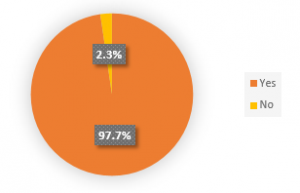
Figure 7: Use mobile devices for learning
Figure 8 below describes the categories of mobile learning devices that the respondents used frequently. Based on the chart, the majority of the respondents (35 respondents) or 79.5% used ‘smart phones’ as the mobile device for their learning. 9 respondents or 20.5% said that they relied on ‘mobile phones. No respondents state for ‘tablet’, ‘personal digital assistant (PDA)’ and ‘other’ type. Thus, the finding showed that the smart phone was chosen as the most common device amongst the respondents. The reason behind this current trend is possibly due to the function of smart phones not only as a telephone but it provides some functions like a miniature computer, internet access and GPS, and it generally uses touchscreen technology.
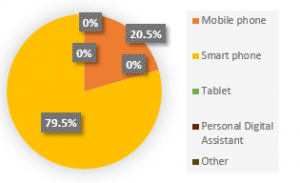
Figure 8: Categories of mobile learning device

Figure 9: Hours per day of usage
From Figure 9, most of the respondents had responded ‘Three to seven hours to Item 7. The data gathered showed that 23 respondents or 52.3% said that they spent ‘Three to seven hours’ on average per day in using mobile devices for learning. Whilst, the data showed that 12 respondents or 27.3% used mobile devices for ‘One to three hours’ on average per day. Only 8 respondents or 18.2% utilised their mobile gadgets for ‘An hour or lesser’ on average per day for learning. Only 1 respondent or 2.3% of students answered, ‘None at all’.
Based on this finding, it can be concluded that most of respondents spent their time with their mobile device for learning or studies. The reason for this was likely to be that the respondents found that it was much more convenient and portable to exploit mobile devices for knowledge compared to their laptops or notebook computers.
5.3. Mind Mapping Applications Background
For this section, the respondents were required to answer a total of three items from this section. The information collected from this section; (1) like to use mind mapping applications, (2) mind mapping for learning, (3) level of mind mapping skills as shown in Table 3. The data then were analysed for investigating the university students’ mind mapping applications background.
Table 3: Mind Mapping Application Background
| Item | Frequency | Percentage |
| 8. Do you like to use mind mapping? | ||
| Strongly disagree | 0 | 0 |
| Somewhat disagree | 5 | 11.4 |
| Somewhat agree | 20 | 45.5 |
| Strongly agree | 19 | 43.2 |
| 9. Do you use mind mapping for learning? | ||
| Yes | 33 | 75.0 |
| No | 11 | 25.0 |
| 10. How good do you think you are at using mind map? | ||
| Average | 17 | 38.6 |
| Good | 23 | 52.3 |
| Excellent | 4 | 9.1 |
| Not good at all | 0 | 0 |
As Figure 10 illustrates, 20 respondents or 45.5% indicated that they ‘Somewhat agree’ to use mind mapping. The remaining 19 respondents or 43.2% claimed that they ‘Strongly agree’ to use mind mapping, whereas only 5 respondents or 11.4% said that they did not like to use mind mapping. Nobody answered ‘Strongly disagree’ for this item. This meant that many respondents liked to use mind mapping but perhaps they were not being encouraged much to use this technique for their learning, especially in essay writing.
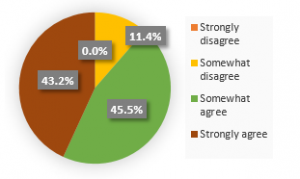
Figure 10: Like to use mind mapping applications
The results in Figure 11 clearly indicated that the majority of the respondents (33 respondents) said ‘Yes’ for Item 8. Only 11 respondents or 25% responded that they did not use mind maps for learning. This result indicated that the majority of respondents (75%) used mind mapping for learning, and this was essentially a common technique among the respondents.

Figure 11: Mind mapping for learning
As shown in Figure 12, most of the respondents (23 respondents) or 52.3% believed that they were good at using mind mapping. About 38.6% of the respondents responded ‘Average’ to Item 9. Only 4 respondents or 9.1% had answered ‘Excellent’ at using mind mapping. This finding displayed that not many students were experts in using mind map for their learning. Therefore, most respondents still need some assistance from their instructors in guiding them to create mind maps.

Figure 12: Level of mind mapping skills
6. Conclusion
Changing curriculum policies and solutions in accordance to the current trends to meet the growth of expertise in the sector is needed in moving towards Industry 4.0. This study shows that the utilization of mobile devices is best apt together with the use of mind maps because the mobile usage is very easy and flexible, accessible everywhere and students can learn effectively [19] , [20]. Based on the empirical data, new mobile apps to augment writing skills could be developed by focusing on positive responses from the students’ English writing skills background, mobile technologies applications background and mind mapping application background. Moreover, using gadgets could cultivate their skills and develop their writing performance. Therefore, the framework designed is optimised to serve a guideline for improving achievement in writing as Education 4.0 progresses.
Authorities and stakeholders within the education system together with educators on the ground should support and provide platforms and facilities to assist in the implementation of this framework such as advanced ICT and smart technology in institutions of higher learning. This framework has the potential to go a long way in helping students to become graduates who are well-versed in the era of Industry 4.0. To upgrade the appropriation of 21st century learning aptitudes by means of versatile innovation, analysts and educators must attempt to utilize portable learning innovation to improve students composing abilities [21], [22]. The utilization of mobile innovations ought to be supported for advanced Education 4.0 as it brings real possibility for the advancement of our instruction delivery systems [23]. Last but not the very least, further research ought to be done to churn out more knowledge with respect to the propagation of the current investigation to quickly propel university students’ learning behaviours towards Industrial Revolution 4.0 preparedness.
Conflict of Interest
The authors declare no conflict of interest.
- H. A. Alsamadani, “The relationship between Saudi EFL students’ writing ompetence, L1 writing proficiency, and self-regulation.” European Journal of Social Sciences, 16 (1), 53-63, 2010.
- A. Seo, “The writing process and process writing.” In J. Richards, W. Renandya (Eds.), Methodology in Language Teaching: An Anthology of Current Practice (pp. 315-320). Cambridge UK, Cambridge University Press, 2002.
- J. Williams, Preparing to Teach Writing: Research, Theory and Practice, 3rd ed. New York NY, Lawrence Erlbaum Associates, 2003.
- S. Hadeel, H. Al-Omari, “The Effectiveness of a Proposed Program Based on a Mind Mapping Strategy in Developing the Writing Achievement of Eleventh Grade 5 EFL Students in Jordan and their Attitudes towards Writing.” Journal of Education and Practice, 5 (13), 88-110, 2014.
- Adam, A., & Mowers, H. (2007). Get inside their heads with mind mapping. School Library Journal, 53(3), 24.
- S. Dasgupta, M. Haddad, P. Weiss, E. Bermudez, “User acceptance of case tools in systems analysis and design: An empirical study.” Journal of Informatics Education Research, 9 (1), 51-78, 2007.
- J. Chang, P. Chiu, Y. Huang, “A Sharing Mind Map-oriented Approach to Enhance Collaborative Mobile Learning with Digital Archiving Systems.” International Review of Research in Open and Distributed Learning, 19 (1), 1-24, 2018. DOI: https://doi.org/10.19173/irrodl.v19i1.3168
- R. A. Karim, A. G. Abu, F. N. Mohd Khaja, “Theoretical perspectives and practices of mobile-assisted language learning and mind mapping in the teaching of writing in ESL classrooms.” Journal of English Teaching Adi Buana, 2 (1), 1-12, 2017.
- L. S. Flower, J. R. Hayes, “A cognitive process theory of writing.” College Composition and Communication, 32, 365-387, 1981.
- R. V. White, V. Arndt, Process Writing. London, Longman, 1991.
- C. Bereiter, M. Scardamalia, The Psychology of Written Composition. Hillsdale NJ, Erlbaum Press, 1987.
- Buzan, T. & Buzan, B. (1996). The Mind Map Book: How to Use Radiant Thinking to Maximize Your Brain’s Untapped Potential. Dutton: New York. P. 59,166, 224, 225, 229.
- Buzan, T. (1993). The Mind Map Book. London, BBC Books.
- Buzan, T. & Buzan, B. (2003). The Mind Map Book. Revised Edition. London. BBC Press.
- V. Venkatesh, J. Y. L. Thong, X. Xin, “Consumer Acceptance and Use of Information Technology: Extending the Unified Theory of Acceptance and Use of Technology.” MIS Quarterly, 36 (1), 157-178, 2012.
- Y. Sun, A. Bhattacherjee, Q. Ma, “Extending technology usage to work settings: The role of perceived work compatibility in ERP implementation.” Information & Management, 46 (4), 351-356, 2009.
- V. Venkatesh, M. G. Morris, G. B. Davis, F. D. Davis, “User acceptance of information technology: Towards a unified view.” MIS Quarterly, 27 (3), 425-478, 2003.
- L. S. Flower, J. R. Hayes, “Writing research and the writer.” American Psychologist, 41, 1106-1113, 1986.
- R. A. Karim, “Technology-Assisted Mind Mapping Technique in Writing Classrooms: An Innovative Approach.” International Journal of Academic Research in Business and Social Sciences, 8 (4), 1092-1103, 2018. DOI: http://dx.doi.org/10.6007/IJARBSS/v8-i4/4146
- R. A. Karim, A. G. Abu, “Using Mobile-Assisted Mind Mapping Technique to Improve Writing Skills of ESL Students”. Journal of Social Science and Humanities, 1 (2), 01-06, 2018.
- R. A. Karim, A. H. M. Adnan, M. H. M. Adam, A. Zaidi, “Mobile Technology use in writing classrooms for higher education.” In MNNF Network (Ed.), Proceedings of the Int’l Invention, Innovative & Creative Conference, Series 1/2019 (pp. 197-202). Senawang, MNNF Network, 2019.
- R. A. Karim, A. G. Abu, A. H. M. Adnan, A. D. J. Suhandoko, “The Use of Mobile Technology in Promoting Education 4.0 for Higher Education.” Advanced Journal of Technical and Vocational Education, 2 (3), 34-39, 2018. DOI: https://dx.doi.org/10.26666/rmp.ajtve.2018.3.6
- A. H. M. Adnan, R. A. Karim, M. H. M. Tahir, N. N. Mustafa Kamal, A. M. Yusof, “Education 4.0 Technologies, Industry 4.0 Skills and the Teaching of English in Malaysian Tertiary Education.” Arab World English Journal, 10 (4), 330-343, 2019. DOI: https://dx.doi.org/10.24093/awej/vol10no4.24
